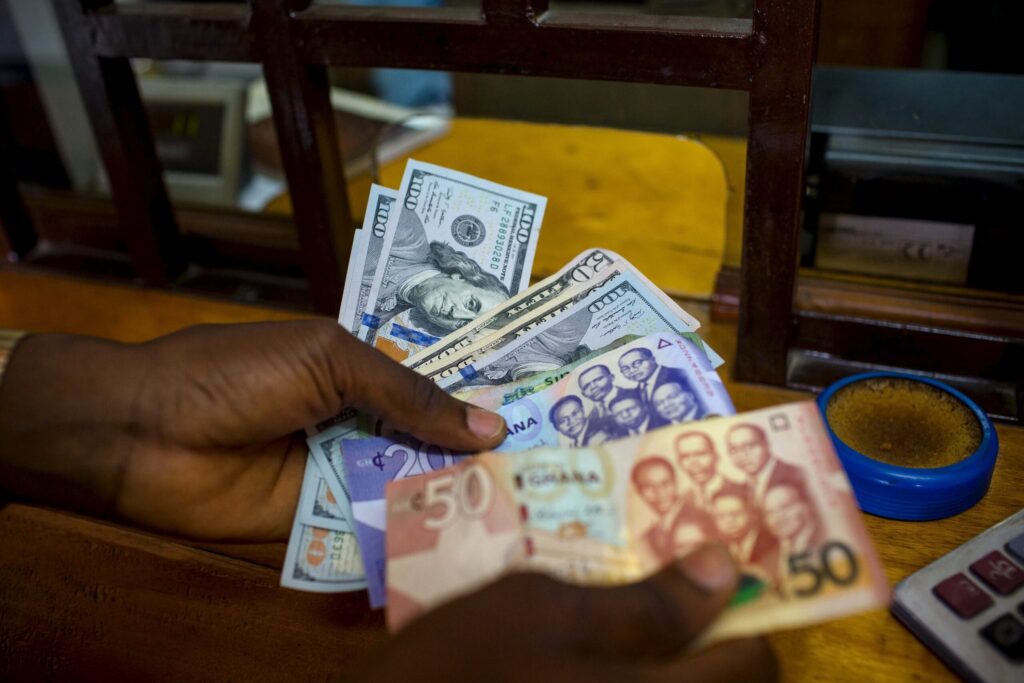Nearly half of African currencies weakened in May 2025, despite continued economic reforms and steady development across the continent, according to the June edition of the Monthly Developments in the African Macroeconomic Environment report published by the African Export-Import Bank (Afreximbank). The report, which assessed exchange rate movements across the continent for the month of May, revealed a complex landscape shaped by global economic volatility and domestic fiscal challenges.
Although some African currencies appreciated or remained stable during the review period, the findings show that ten countries experienced notable depreciation. Among those with relative gains, Ghana, South Africa, Namibia, and Eswatini recorded improvements, while Kenya and Liberia maintained stable exchange rates. Nigeria’s naira appreciated by 2.1 percent month-on-month against the U.S. dollar, but the currency still posted an 11.5 percent decline year-on-year, underscoring persistent structural constraints.
Ghana’s cedi came under sharp pressure, depreciating by 21.5 percent month-on-month and 10.6 percent year-on-year. It traded at 10.3 cedis to the dollar in May, down from 13.9 cedis in the same period last year, despite ongoing fiscal reforms. South Africa’s rand showed modest movement, appreciating from 18.1 rand per dollar in April to 17.8 in May, yet on a yearly basis, it declined marginally by 0.7 percent.
Trade volumes also reflected some fragility. According to Afreximbank, total African trade fell to $120.8 billion in February 2025, down from $125.9 billion in January. Despite the monthly decline, this represented a 0.3 percent increase compared to February 2024. Intra-African trade followed a similar trend, falling from $18.6 billion in January to $18 billion in February. Nevertheless, the report noted that this still amounted to a 5.6 percent year-on-year increase, indicating the growing influence of the African Continental Free Trade Area (AfCFTA) and deeper regional integration.
Despite pressures on currency and trade dynamics, Afreximbank observed encouraging developments in Africa’s credit outlook.
Several countries received credit rating upgrades driven by improved governance, fiscal discipline, and growing investor confidence. “Nigeria has received upgrades from both Fitch and Moody’s, reflecting progress in institutional reforms,” the report noted. “As a result, Eurobond yields due in June 2031 have declined by 250 basis points.”
South Africa retained its BB- rating from S&P, although the agency issued a cautionary note: “Grow faster, fix your fiscal issues, or remain stuck.” Ghana, which experienced a selective default in 2024, was upgraded to CCC+ by S&P after it restructured its Eurobonds and improved its fiscal posture.
Benin was also upgraded to BB-, reflecting its strong commitment to fiscal responsibility and performance.
Meanwhile, several African economies—among them Angola, Egypt, Nigeria, Côte d’Ivoire, Senegal, and Morocco—returned to international capital markets with new Eurobond issuances.
This trend, according to the report, demonstrates renewed investor appetite and reflects Africa’s capacity to take advantage of easing global interest rates and favorable financing conditions.
Afreximbank concluded that Africa’s macroeconomic performance in mid-2025 remains relatively resilient, supported by ongoing reforms, stronger credit fundamentals, moderating inflation, and exchange rate stability in many economies. However, it warned that mounting global challenges could present downside risks to the continent’s outlook. “Although over half of African countries show stable or improving fundamentals, regional disparities persist, and commodity price volatility continues to weigh on external balances,” the report stated.
The bank emphasized that despite a promising outlook in many respects, African economies remain vulnerable to global shocks such as stagflation risks, fiscal tightening, geopolitical tensions, and a downturn in global trade. To weather these challenges and sustain growth momentum, the report urged governments across the continent to strengthen domestic policy buffers and accelerate the pace of structural transformation.


